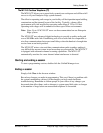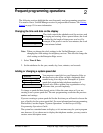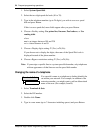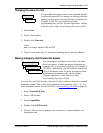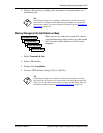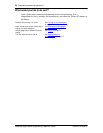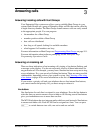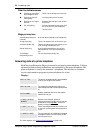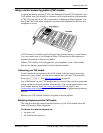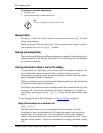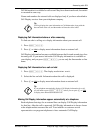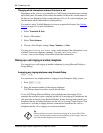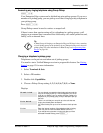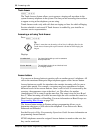
P0908510 Issue 01 Enterprise Edge Feature Programming Telephone Guide
Answering calls
Answering incoming calls with Hunt Groups
Your Enterprise Edge system now allows you to establish Hunt Groups in your
system. Hunt Groups are a group of Enterprise Edge set DNs that can be called by
a single directory number. The Hunt Groups feature ensures calls are easily routed
to the appropriate people. You can program
• the members for a Hunt Group
• member position within a Hunt Group
• how calls are distributed
• how long a call spends looking for available members
• what happens if all members are busy
For more information on Hunt Groups see Programming Hunt Groups on page 101.
For more information about software packaging, see the Enterprise Edge
Programming Operations Guide.
Answering an incoming call
There are three indications of an incoming call: ringing, a line button flashing, and
a message on the display. You do not necessarily receive all three indications for
any particular call. For example, you may have a line that has been set up not to ring
at your telephone. If so, you see only a flashing line button. There are many possible
combinations, depending on how your system is set up. See Choosing a line using
a line button on page 46 for more information on the use of lines.
If you receive a priority call and your telephone has no free internal line buttons,
you cannot transfer the priority call, you must accept or release it.
Line buttons
One line button for each line is assigned to your telephone. Press the line button to
select the line you want to answer or use to make a call. Having several line buttons
gives you immediate access to more than one line.
The M7100 telephone has two intercom paths which are used instead of line buttons
to answer and make calls. Each M7100 can be assigned two lines. You can press
˙
to switch between two calls, one active and one on hold.
3



